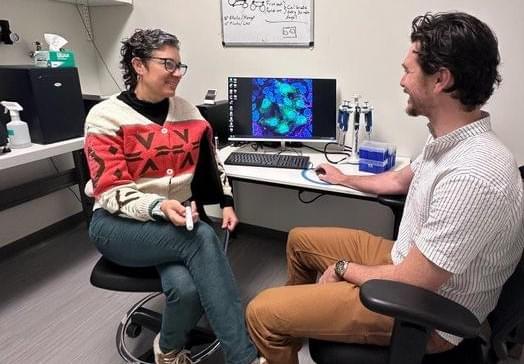As hype and investment in AI soars, some businesses are learning that the technology isn’t reliable enough to represent their companies.


Researchers have developed a robot that can anticipate your smile and return it almost instantly. The new work, published as a study in the journal Science Robotics, is intended to help human-looking robots appear more natural. The actual expressions this one makes, however, look anything but.
Named “Emo,” the bot can predict your smile less than a second before it actually appears using cameras lodged into its pupils. Then just as the smile creeps up your face, as shown in an amusing video from New Scientist, Emo grimaces its horrific imitation of one in return, making sure to keep eye contact the entire time.
“I’m a jaded roboticist, but I smile back at this robot,” study coauthor Hod Lipson, at Columbia University, told New Scientist.

A hydrogen fuel-cell passenger train developed by Swiss rail vehicle maker Stadler Rail has achieved a new Guinness World Record, traveling for almost two days around the clock for a distance of 1,741.7 miles.
Efforts to clean up dirty trains are already well underway, with heavy investment in electrifying networks around the world as well as rolling out battery-electric locomotives such as the FLXDrive, the Blues train and the Flirt Akku.
That last example is made by Stadler Rail AG, and managed to achieve a Guinness World Record in 2021 for the longest per-charge battery-only journey of 224 km (~140 miles), on a route between Berlin and Warnemünde during a freezing local winter – not bad for a train that was designed with an operational per-charge range of 80 km.
An automated YouTube stream of an endless AI-generated “Family Guy” show called “AI Peter” has devolved into ear-bruising chaos, Kotaku reports, with some of your favorite characters of the sitcom blurting out gibberish — and screaming at the top of their lungs nonstop.
The stream, which started back in June of last year, relies on audience submissions to come up AI-generated scripts for back-t0-back “episodes” of the beloved animated series.
And, as Kotaku points out, moderation of these paid submissions doesn’t appear to be front of mind. Some users are misusing the generative AI tech to break the unsettling, 3D-animated characters in unusual ways.
Presents Intermittent FastingDr. Joseph Purita presents Intermittent Hypoxia therapy and mitochondrial healthOur founder Bill Faloon provides A New…

1/ Services like HeyGen and arcads.ai let you make “digital avatars” that can talk in sync with their lips, speak different languages, and move and gesture naturally.
2/ The high quality of these AI-made videos makes it hard for even supposed experts to tell fakes from real ones.
Just as AI-generated photos can look very realistic, there are now AI-generated videos that are almost indistinguishable from real video.

AR-Smart glasses: 2029. Will look like just a normal pair of sunglasses. All normal smartphone type features. Built in AI systems. Set up for some VR stuff. An built in earbud / mic, for calls, music, talking to Ai, etc… May need a battery pack, we ll see in 2029.
The smart glasses will soon come with a built-in assistant.


How can the microscopic creatures, tardigrades, also called water bearers, help contribute to developing new medical treatments? This is what a recent study published in Protein Science hopes to address as a team of international researchers investigated how tardigrade proteins could replace certain medical treatments when refrigerating those treatments are unavailable, specifically regarding stem cell treatments, and could possibly slow the aging process.
One reason tardigrades are an intriguing option is due to their ability to start and stop suspended animation when presented with outside stressors. Now, researchers are attempting to introduce tardigrade proteins in human cells, and the researchers have found some surprising results.
“Amazingly, when we introduce these proteins into human cells, they gel and slow down metabolism, just like in tardigrades,” said Dr. Silvia Sanchez-Martinez, who is a Senior Research Scientist at University of Wyoming and lead author of the study. “Furthermore, just like tardigrades, when you put human cells that have these proteins into biostasis, they become more resistant to stresses, conferring some of the tardigrades’ abilities to the human cells.”